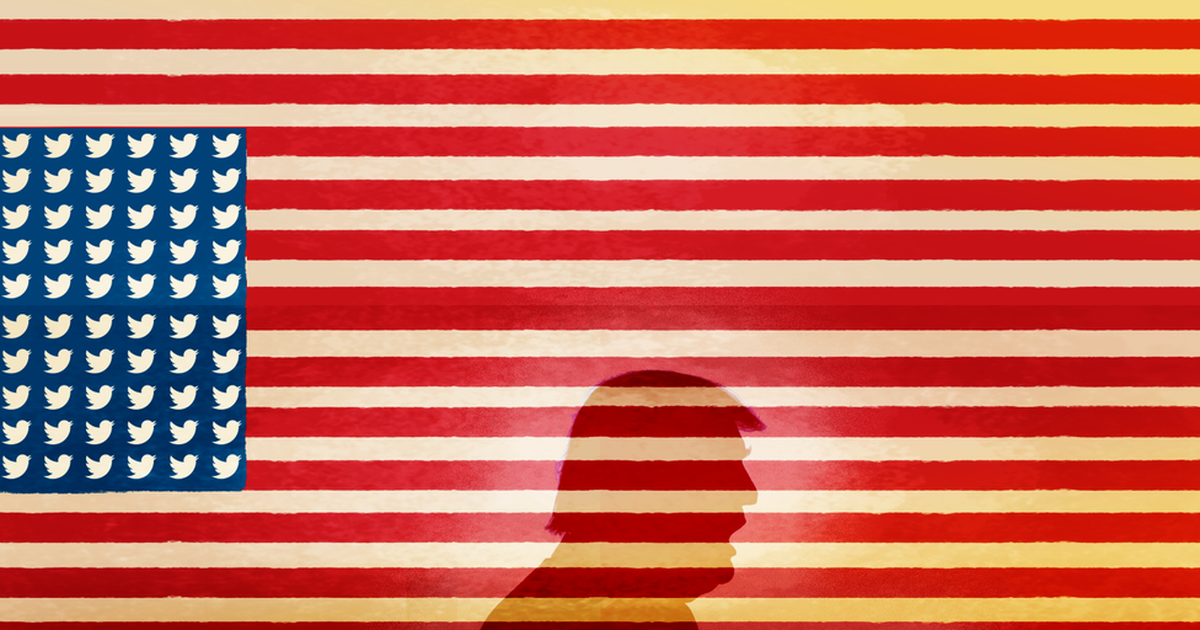
Donald Trump likes to blame “Big Tech” for having it out for him. In reality, in response to reports that link social media to the spread of dangerous misinformation, both Twitter and Facebook were forced to implement new policies around the 2020 election to quell a problem of Trump’s own making.
And boy, do his feeds — where practically every other post has been flagged for violating these new policies — reflect exactly how badly we needed them.
Over the months leading up to the 2020 presidential election, Trump had been making false, completely unsubstantiated claims around widespread voter fraud, as well as accusing the Democrats of rigging or stealing the election with absolutely zero evidence. Concerned that allowing Trump to spread blatant lies that cast doubt on the perfectly legitimate results of a democratic election would incite more unrest or even violence in America, those social platforms prepared by instituting new policies around labeling disputed claims and misinformation.
Sure enough, since vote counting began on Election Day (Nov. 3), Twitter and Facebook have been forced to flag the president’s posts (including retweets and reposts) for spreading misleading or disputed election claims a total of 34 and 27 times, respectively.
Now, those numbers come with some caveats. For one, they only reflect his posts at the time of this article’s publication on Sunday afternoon, Pacific Time. Also, because of the way Twitter and Facebook have handled the election misinformation situation differently, we had to narrow our definition of what constituted a “flagged” post.
Meanwhile, Facebook is labeling posts from *both* Trump and Biden with relatively anodyne messaging about the votes still being counted, but does not appear to have taken enforcement action on any. pic.twitter.com/nJvBhPB5sr
— Will Oremus’ Total Landscaping (@WillOremus) November 4, 2020
As of Nov. 8, Facebook has taken the approach of labeling every post from both Donald Trump and Joe Biden’s page with a note that Biden is the projected winner of the 2020 election (citing Reuters and the Associated Press as sources).
Since this more general fact-checking label was applied to everything, we only counted the Trump posts flagged with the following corrections, which cited the Bipartisan Policy Center as the source:
-
“Election officials follow strict rules when it comes to ballot counting, handling and reporting.”
-
“Differences between final results and initial vote counts are due to it taking several days after polls closed to ensure all votes are counted.”
-
“As expected, election results have taken longer this year. Millions of people across the US voted by mail, and mail ballots take longer to count.”
-
“Both voting in person and voting by mail have a long history of trustworthiness in the US. Voter fraud is extremely rare across voting methods.”
-
“Observers of the vote counting process are required to act peacefully and lawfully, and not interfere with the process.”
Out of the 54 posts Trump has made since vote counting began on Nov. 3, 27 included a pop-up with one of the above pieces of factual information. That means exactly half of the president’s posts were flagged. However, notably, Facebook users are still able to exit out of said pop-up in order to make that important information disappear.
Twitter’s policy didn’t include any wholesale fact-checking labels. Instead, they responded only to violations, with some posts merely flagged with disclaimers like: “This claim about election fraud is disputed,” or “Learn how voting by mail is safe and secure.” Meanwhile, other Trump posts considered more serious violations were hidden behind a warning users need to expand in order to even read the original tweet, while stating that, “Some or all of the content shared in this Tweet is disputed and might be misleading about an election or other civic process.”
Out of the 80 tweets Trump has posted since vote counting began on Nov. 3, 34 received these flags. In other words, more than 40 percent of the tweets shared by the president violated the company’s rules around misinformation regarding the election.
If you’re wondering whether any of Joe Biden’s posts were flagged on either platforms: No, they were not. Before you think this spells out a conspiracy against Trump, though, take the time to actually read and understand the difference in each candidate’s posts, and why one needs to be handled like a ticking time bomb and the other acts like an elected official who ran for President of the United States.
In the wee hours of Nov 4., Trump made the reason behind the need for these new social media policies abundantly clear.
At a press conference, he in essence attempted a coup by declaring himself the victor of an unfinished election — despite the fact that Joe Biden was in the lead and all legitimately cast votes in key swing states were still days away from being fully counted. Biden was later declared the projected winner on Saturday, Nov. 7, only after the majority of votes were actually counted.
Trump wasn’t the only politician on the 2020 ballot judiciously violating social media rules around misinformation, though. Marjorie Taylor Greene, the QAnon believer from Georgia just elected to Congress, also had a string of tweets that needed to be flagged.
So Trump’s keeping good company, I guess.
